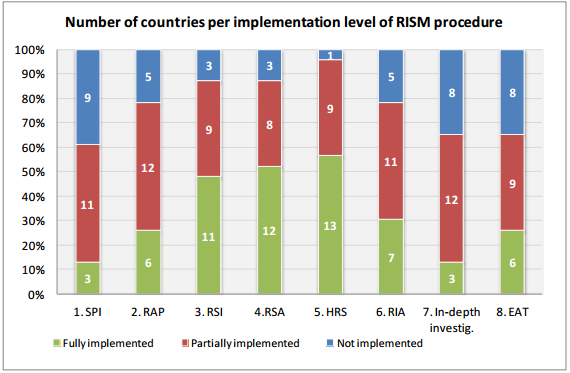
Road Infrastructure Safety Management (RISM) refers to a set of procedures that support a road authority in decision making related to the improvement of safety on a road network. Some of these procedures can be applied to existing infrastructure, thus enabling a reactive approach; and other procedures are used in early stages of a project’s life-cycle allowing a proactive approach. The objective of this paper is to provide an overview of the most well-known procedures and present a series of recommendations for successful road infrastructure safety management. The work described in the paper was completed by the IRTAD sub-working group on Road Infrastructure Safety Management and presented in detail in the respective Report. The methodology followed on this purpose included the description of the most consolidated RISM procedures, the analysis of the use of RISM procedures worldwide and the identification of possible weaknesses and barriers to their implementation, the provision of good practice examples and the contribution to the scientific assessment of procedures. Specifically, the following RISM procedures were considered: Road Safety Impact Assessment (RIA), Efficiency Assessment Tools (EAT), Road Safety Audit (RSA), Network Operation (NO), Road Infrastructure Safety Performance Indicators (SPI), Network Safety Ranking (NSR), Road Assessment Programs (RAP), Road Safety Inspection (RSI), High Risk Sites (HRS) and In-depth Investigation. Each procedure was described along with tools and data needed for its implementation as well as relevant common practices worldwide. A synthesis summarizing the key information for each procedure was also drafted. Based on a survey on 23 IRTAD member countries from worldwide, the lack of resources or tools is the most commonly stated reason for not applying a RISM procedure. This has been frequently found mainly in European countries. Another common reason is the absence of recommendations / guidelines, especially for SPI, RAP, RSI and RSA. This highlights the importance of the presence of some legislation regulating the application of the procedures. Lack of data was found important mainly for SPI, HRS and EAT. Good practices of road infrastructure safety management have been explored in order to find solutions to the issues highlighted by the survey and provide examples about how these issues have been overcome in some countries. Specifically, issues related to data, legal framework, funding, knowledge, tools and dealing with more RISM procedures were addressed. Finally, nine key messages and six recommendations for better Road Infrastructure Safety Management were developed based on the conclusions made.
| ID | pc231 |
| Presentation | |
| Full Text | |
| Tags | international comparisons, road infrastructure, road safety measures |






